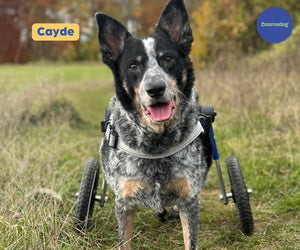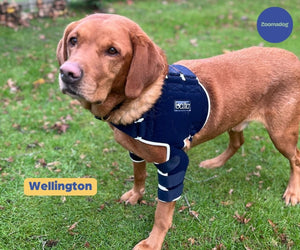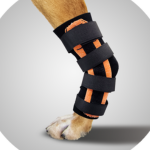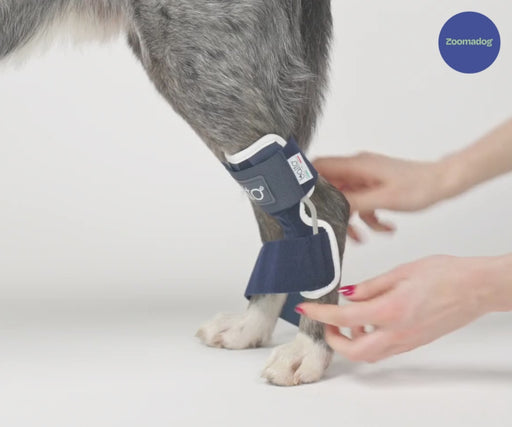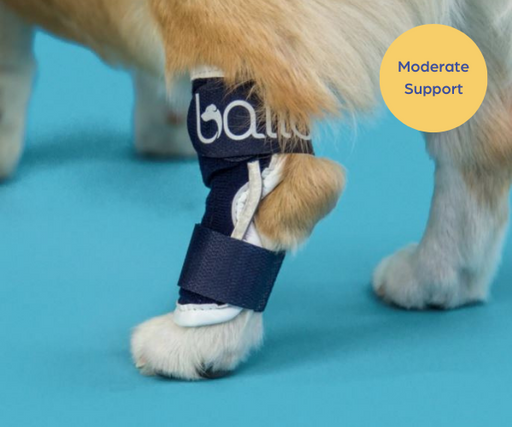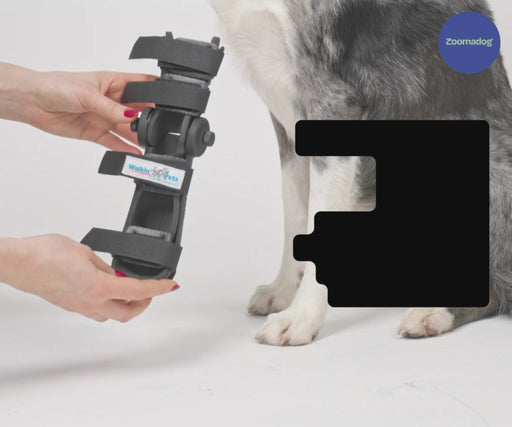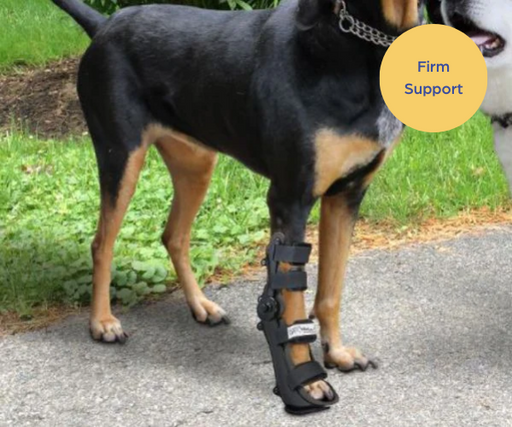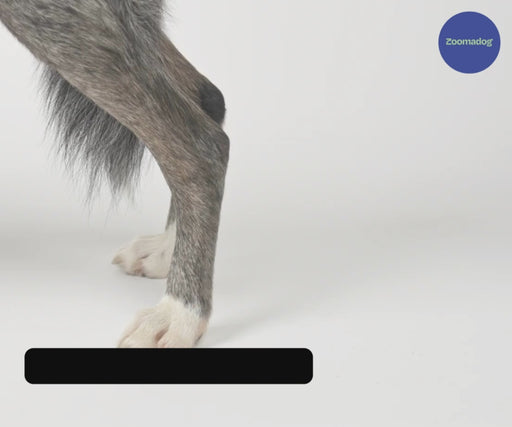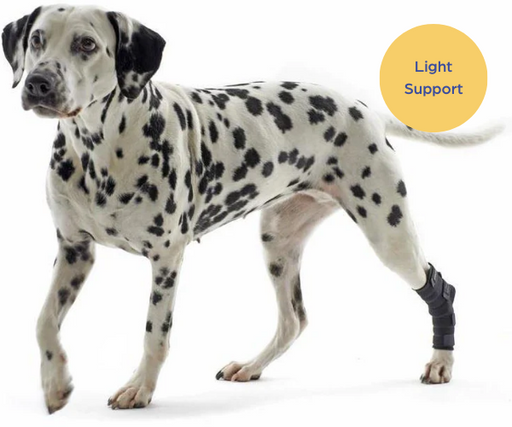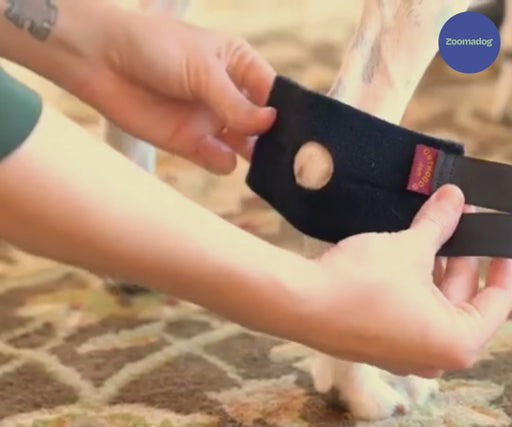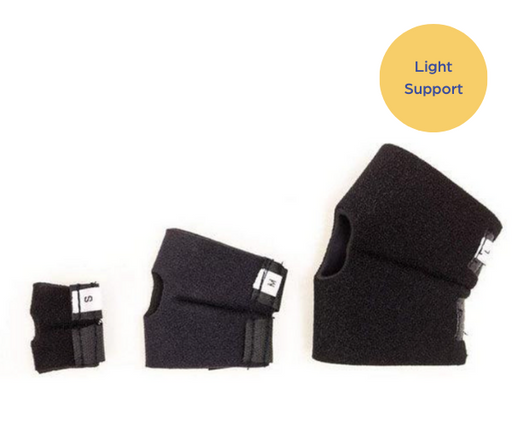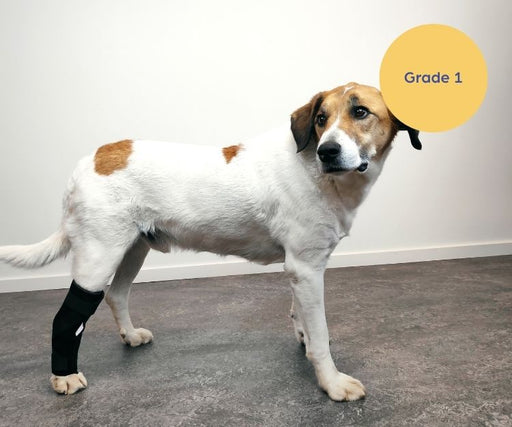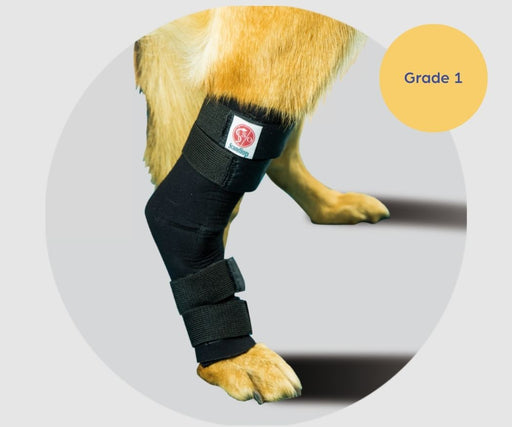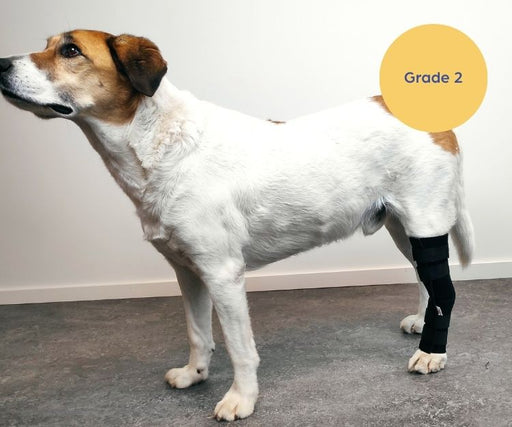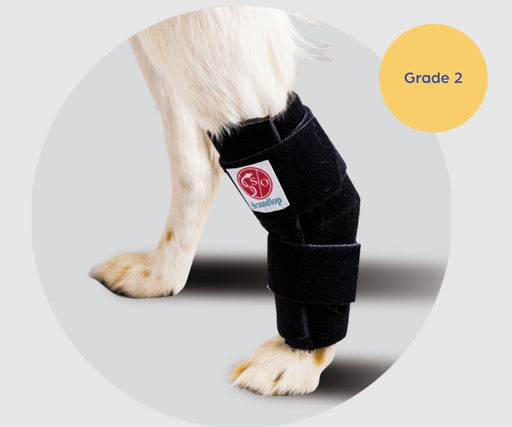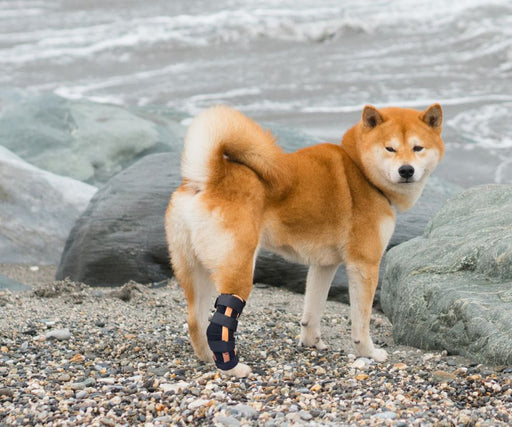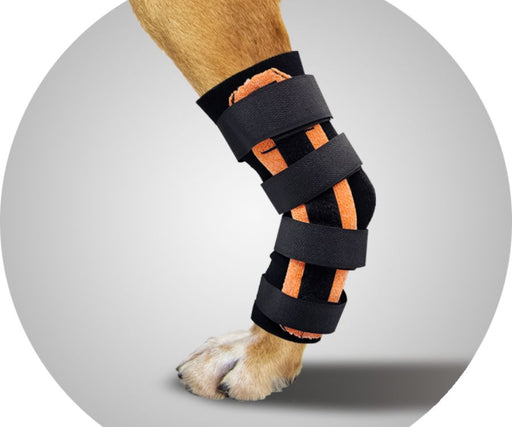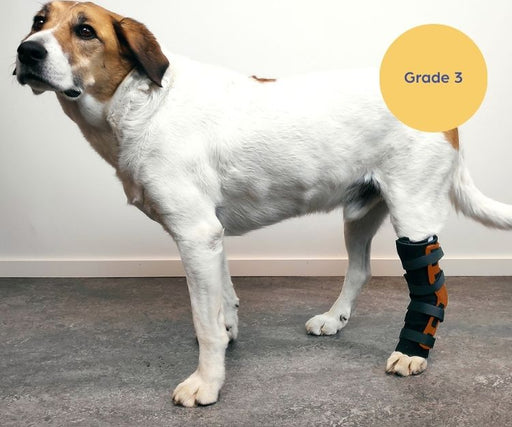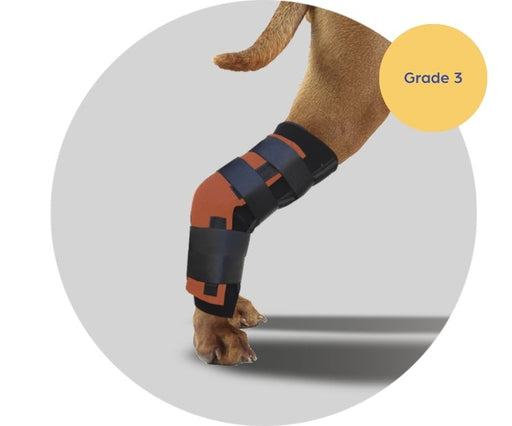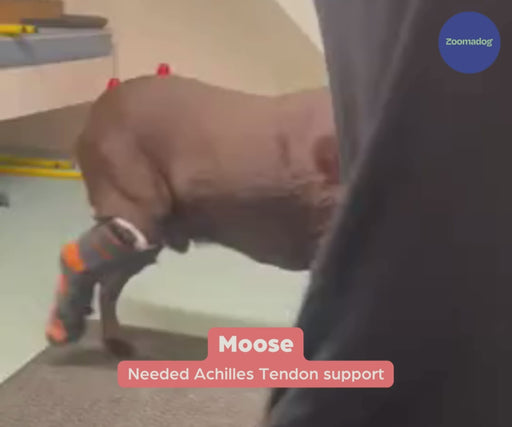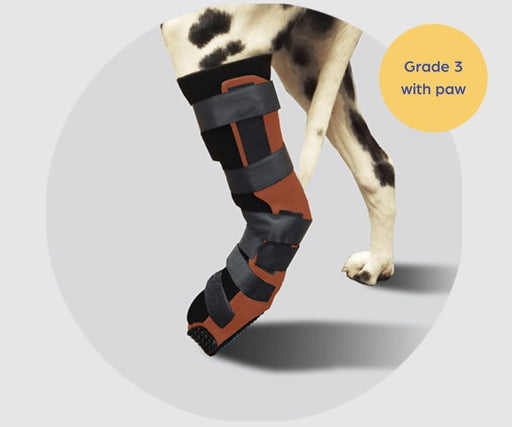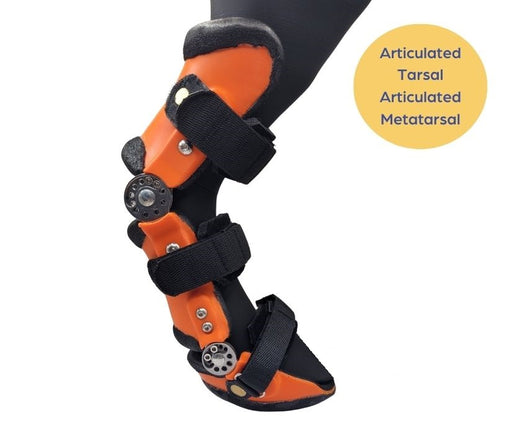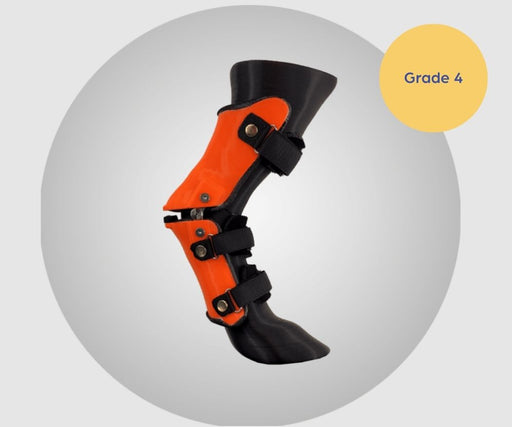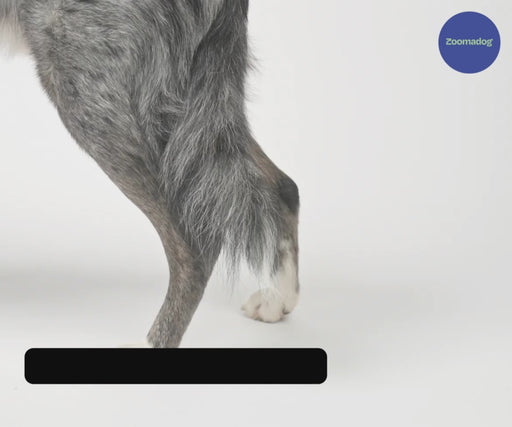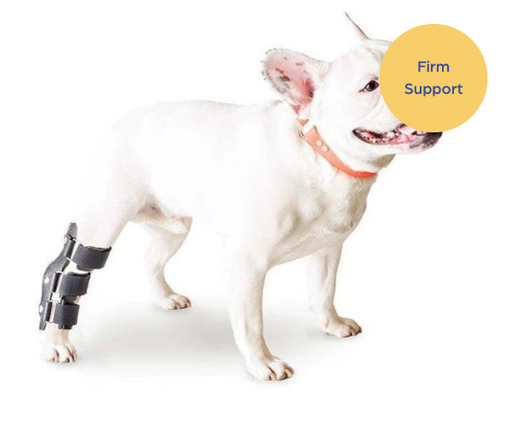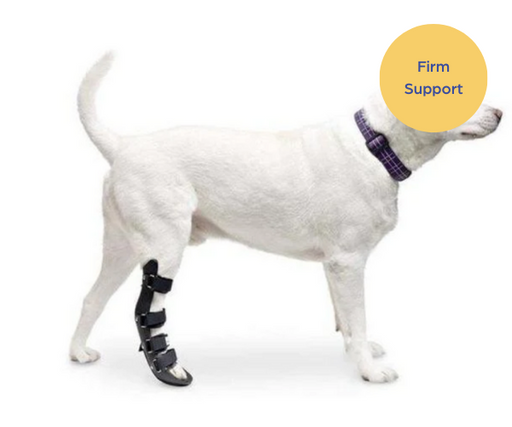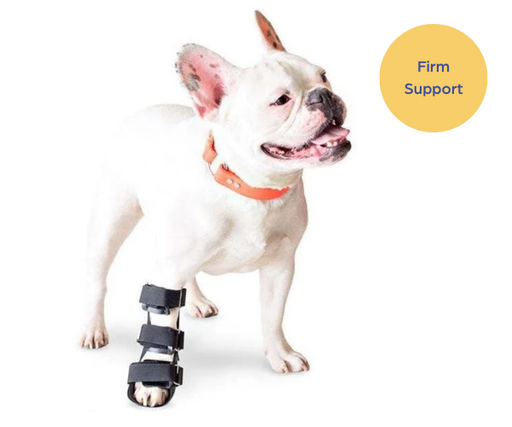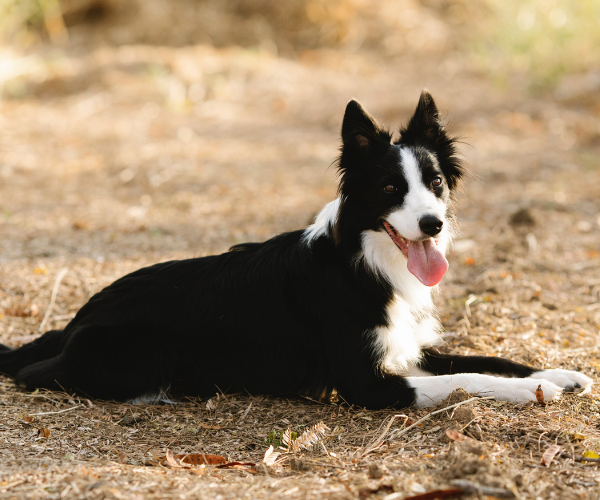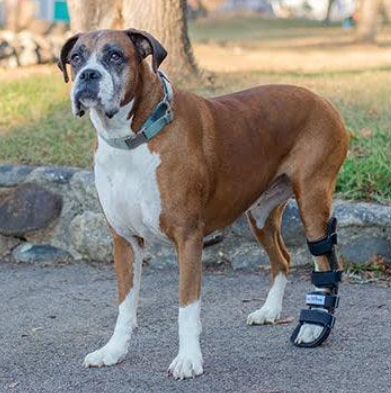When is a Hock Support Right for My Dog?
Wearing a hock support will help your dog if they have injured their hock joint, your dog might limp, experience reduced mobility or show pain. Stabilising the joint will protect it from further damage and reduce pain.
Even if your dog is having surgery it is a good idea to stabilise the joint pre-surgery, and reduce the joint movement.
Post surgery, extra support will speed up healing and rehabilitation, plus help with pain management.
How will a Hock Support Help?
A dog hock support or hock splint will stabilise the joint and reduce recovery time. Wearing one will prevent further injury or a deterioration in the condition, and lessen pain.
Hock supports give compression, neuromuscular feedback and low level stabilisation, to speed up healing and prevent re-injury.
Firmer support - semi-rigid and rigid splints - are better for serious conditions because they partially or fully immobilise your dog’s joint, taking pressure off it and completely stabilising it.
How do you pick a Hock Support?
A light hock support is best for light sprains, muscle strains, mild arthritis or if there’s minor joint instability. They can also be used preventatively. If your dog has been engaging in high impact activities such as agility training or jumping, you can apply a wrap afterwards.
A dog hock splint is necessary for a serious ligament injury (such as tear or rupture), severe joint instability, post surgery, or a bone fracture. Splints give strong stabilisation because they have a rigid outer shell or casing. Splints can be used pre- and post-surgery.



